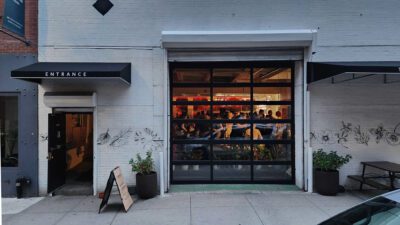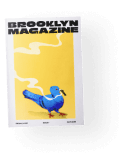Sound Artist and Composer Lea Bertucci’s Constellation of Work
It’s immediately clear that Lea Bertucci doesn’t spend much time on the surface of things. In telling me about playing the saxophone, she casually mentions that, “They were invented in the 1880s, so they got a lot of the kinks worked out that clarinets never quite had.” She dives deep on every subject we touch on, from the history of her home town, to Star Trek, to the lineage of multiple art movements. Her interests stretch beyond boundaries. The name of her 2017 album, All That Is Solid Melts into Air, was taken from Karl Marx, and its first track “The Cepheid Variations” is named after a star system. So it is startling to hear her say, “I’m not naturally talented at music. I’ve studied music my whole life and I don’t know how to write a fucking song.”
Lea would describe herself as a sound artist and composer who leans towards the most difficult projects she can imagine. Her past few years have been focused on writing with woodwind instruments, tape collage, and electroacoustic feedback. She just released a tape on NNA which showcases two compositions that were recorded and performed live over the last few years. In June, a 20-voice children’s choir will premiere ORACLE, the piece she wrote during her month-long residency at the MacDowell Colony. In July, a book of graphically rendered scores / creative notation she helped assemble with Inpatient Press is set to come out. Currently, she is hosting Site: Sound, a site-specific lecture and event series she curated in collaboration with Clocktower.
Indeed, 2017 is shaping up to be the year where many of her ideas are being realized. But for someone that has studied music for most of her life, she’s still not comfortable with it. “I definitely feel like an outlier. So I’m more comfortable as the weirdo…in any given situation at all, always.” It’s that perspective which makes all of her varied projects this year that much more admirable. I met up with her in Ridgewood, Queens to talk about her work and all things late into the night.
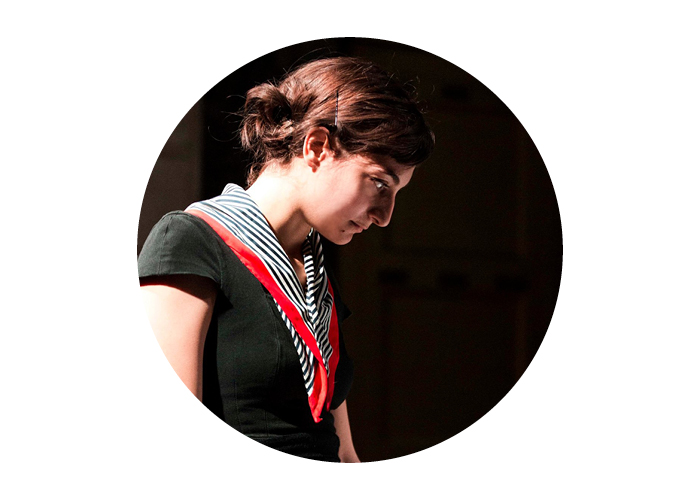

What is your musical background?
I started playing saxophone when I was in elementary school, and I failed the standardized test. The musical aptitude test, I totally failed it. So my mom had to call the band instructor and beg them to let me into class. One of my later teachers, told me that the test was totalbullshit and he had spent his master’s thesis trying to disprove the validity of that test.
Standardized tests are pretty much the exact opposite of how my brain works. What was the test?
I actually remember it. It was pitch recognition. So a pitch, then another pitch,”Is this the same note, is this a different note?” Standardized testing is not a way to measure anything other than how good someone is at standardized testing. I remember taking the test. So I was really bummed, so my mom called the band instructor and begged for me to be let into class, and so I was let into class. I am not naturally talented at music, so I just played until high school. Then I started getting into jazz and classical music. I started going pretty hard on it. With alto saxophone. Then later I started playing bass clarinet.
Are they similar?
They are both woodwind instruments. They both have reeds. The way that you hold your fingers is similar. There are some important differences with the clarinet. I would say the clarinet is a harder instrument to play in general. saxophones are built for speed. They are also a new instrument. They were invented in the 1880’s/ 90s. so they got a lot of the kinds worked out that clarinets never quite bad. So I’d say bass clarinet is way more challenging.There are certain instrumentalists such as Eric Dolphy that made it more popular in jazz. It lends itself pretty well towards jazz vernacular.
At what point did you start writing or playing your own music?
I was really serious about music when I was in high school, I was like i’m gonna go to music conservatory. I’m going to study woodwind performance. That was obviously a horrible idea. I ended up going to Bard. When I went there I got frustrated with the whole idea of virtuosity, because I thought people were very concerned with being technically good at something and not being artists. At the same time I was also really into visual art and I ended up majoring in photography. I did a lot of photography and film stuff and it kind of stuck. I kind of stopped playing music for the first three years. I stopped playing because I felt very alienated. I was getting into free jazz at the time and just the way that jazz was approached was just so. not by bard, but by any institution. Free Jazz is anti institutional music. I did visual art and I started hanging out with noise kids.
I went to Bard and was like, what’s the hardest thing I can do here? Oh, it’s photography? I want to do that. I wanted to do the most challenging thing. It was really rigorous on an intellectual level. I shot only film while I was there. I shot large format film, like a huge view camera that you put the thing on the back. I was ridiculously old school about it. But the guy who is the head of the program there is a master of that particular camera. He is one of the most celebrated photographers in the 20th century for sure. Stephen Shore. His work is amazing. He’s a great dude too.
I actually got to develop my aesthetics in lots of interesting ways. I feel like it totally relates to what I do now, even though it’s a different medium. You know like cultivating a sense of composition and repetition and aesthetic I guess. I totally gravitated towards what I thought were the weirdest people.

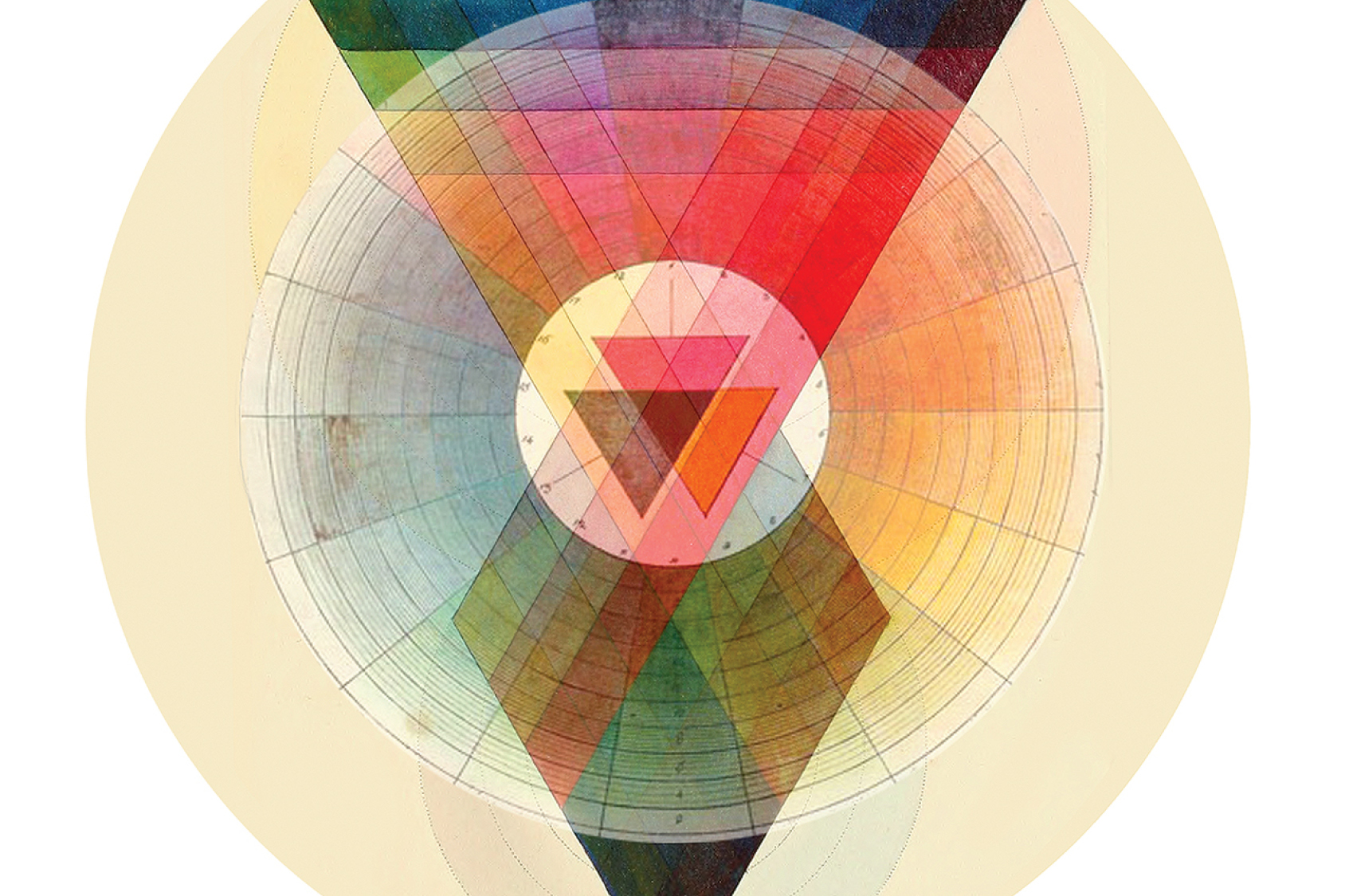

I don’t hear the term composer very often in the noise community. What do you think the differences are, or do you see a difference?
Ultimately, it’s about how you talk about yourself, because there’s a lot of people from the indie rock scene who fancy themselves composers now, but they basically still write songs. I call myself a noise artist and a composer, because i actually think that’s the truest to what I do. The structures of what I’m working on are not song based. I’ve never written a song. I don’t know how to write a song. I’ve studied music my whole life and I don’t fucking know how to write a song. I don’t know what would happen if I tried with a bridge and a chorus.
I’ve never written a song. I don’t know
how to write a song.
I don’t feel comfortable in the classical context. I definitely feel like an outlier. So I’m more comfortable as the weirdo…in any given situation, at all, always. Groucho Marx said, “I’d never be the member of any club that would have me.” [Laughs.] I have been in the noise scene for a long time. I’ve always found that those were the sweetest most eccentric people, but I also don’t feel completely comfortable there either. I guess it’s somewhere in between classical and noise music.
Did you come to the city straight from Bard?
The week after classes were done I moved down here. I was kind of raised in the shadow of New York, and both of my parents grew up in deep Brooklyn. My mom had owned this store in soho in the early 90s. My parents were antique dealers.
I bet your house was nuts.
Oh yeah, we had some weird shit. I saw this picture of myself sitting on a chair made of horns. There was this old school telephone, that had these bells on it. To me it looked like this really scary face. Anyway. [Laughs.]
The city is so financially strenuous for musicians. Do you have a day job?
Yes. It’s at the Cooper Union School of Architecture. I photograph things, I organize things. I do a lot of retouching. It’s great because it’s part time. Last year I did a residency for a month, and it was great because they didn’t fire me. Right now, we are preparing for an exhibition so I’m putting in extra hours.
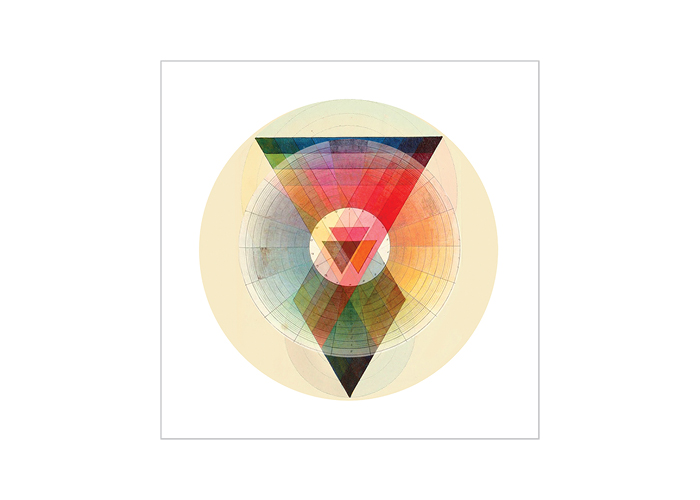

I. NNA RELEASE
Where did you record the NNA tape?
Both of those pieces are the premiere and the only time that either of them have ever been played. So I had been sitting on them for a little while, so i approached a couple different labels. Side A “The Cepheid Variations” was recorded by issue project room, and that was the first one I did there when I was an artist in residence. In 2015. Four months later I did this show at Knockdown Center where we installed this ten channel sound system all throughout the space and we curated 6 different artists to come and use the spatial sound system. My piece was the second side of the NNA tape “Double Bass Crossfade.” That piece is for two double basses and ten channel sound. So it was two pieces with strings I had done within a four month span of time so I figured it would be a good thing to release.
Where did the name of the album come from?
The name of the album is from Marx actually. So he talks about for the worker when capitalism gets really out of control, everything that the worker clings to, all of his material comfort and support systems become air. They become unstable. It’s a creative translation of the original german text. I just thought that there was something really poetic about it and there is also something that relates to the quality of the sound. It relates to everything we are all thinking about right now, which is how the things that we’ve taken for granted as stable in our lives is really going down the toilet right now. We have nothing to depend on, especially as an artist. Marx would call me a petit bourgeois, a student or an artist, which is somewhat in the bourgeois class, but I grew up in a proletariat situation for sure. I grew up pretty poor. I just really think it’s important to think of those terms nowadays.
II. ORACLE a piece for 20-voice children’s choir
Residencies can be intimidating, what was yours?
It was this place called the MacDowell Colony in New Hampshire. It’s the oldest artist residency in the united states. Which is crazy. I got my own cabin, with a huge fireplace and a Steinway grand.
It’s totally interdisciplinary. I have never experienced anything like that before. There were pictures of Alice Walker in my cabin. It was deep, it was really deep. So I spent a month there writing this piece for a children’s choir, which is going to premiere in June. I met a lot of really cool people. It’s in Peterborough, New Hampshire.
It was a thing where I’m like, I’m going to apply to this fancy residency and I don’t expect that I’ll get it. But someone how I got it and it was amazing. We gave presentations, so I had everyone into my cabin and it was really intimidating because all the other music people were like classical music composers who were like yes, i’m writing for this orchestra and it will be premiered at Carnegie Hall next year. Like really legit people, who actually know what the fuck they’re doing. And I’m sitting there being like, children’s choir. I played the same set that I had been playing at the time for noise heads in Brooklyn and people were really into it. The other composers were kind of fascinated by what I was doing.

Did you apply to the residency with that idea in mind?
For MacDowell specifically, if you are a more established artist you can probably apply and be like I don’t know what I’m gonna do. But because I’m a younger artist they wanted to see a proposal. I had been thinking about this piece for 8 months before I had even started to write it. So by the time I applied I had a pretty formed idea about what it would be like. I think it helped because it really did take a month to write. It was a month where I worked every single day, 8 hours a day if not more. It’s the most complicated thing I’ve ever done.
How do you approach something like that?
It’s pretty conventionally notated. The way that I did it, because I don’t use midi and I don’t mess with Sibelius (notation software). I had wrote conductor score, 40 pages, hand written notation. The way that I did it, was I sang. So I had this piano, and I knew I wanted to use a lot of sustained pitches and a lot of glissandi (a note that goes up or down over different periods of time). So I would just pick a note and sing a sustained pitch, and I made different recordings of myself doing that, and I would take a pitch and do a glissando, up or down from that pitch. So I have this huge sample library of myself singing these weird things.
Where do you get children to sing this?
It’s the children’s Trinity Youth Chorus, which is a pretty great children’s choir, which is part of Trinity church in lower Manhattan. They do a lot of contemporary work, so they know how to.
It will be in the middle of June. June 17th I think. It’s been a long time coming. It’s in Madison Square Park. It’s in Midtown and there is a lot of ambient sound, and if you don’t take that into consideration the piece is going to fail. So what I’m doing with that, because if you play outside there is no acoustic sound, there is no echo. Voices sound really good with echo. So the way that I designed the piece was that all the children are going to have microphones on them and then I’m going to process their voices with different amounts of decay. I have this awesome eventide plugin (imitates an echo pedal) that sounds sick. Sometimes it will be an entirely dry sound of them singing, and sometimes it will have like 30 seconds of decay. It’s sounds pretty trippy.

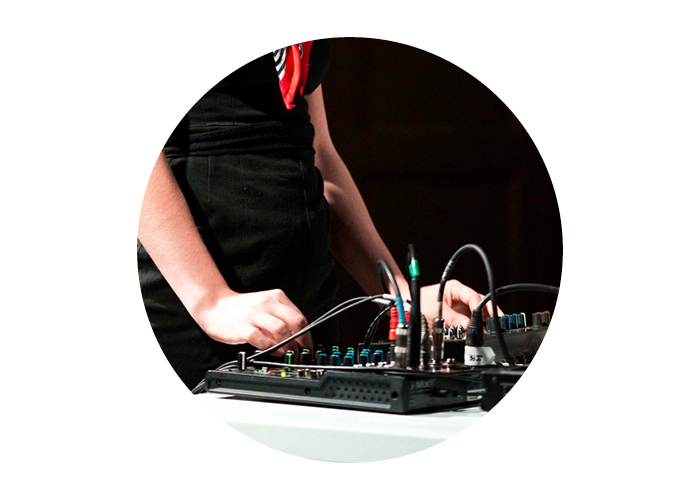

How did you know what twenty people would sound like when you were in the cabin?
I didn’t. [Laughs.] The way that’s it’s configured is that the audience is in the center and the children are in groups. So there is 5 groups of 4 children. Positioned around the center. And then there is the sound system, which will be 6 channels in between each group of children. So the audience is hearing acoustic voices and also the processed voices at the same time.
Why Children?
Ok, so children are particularly hard to write for. Voice in general is hard to write for. There are certain rules with it. But for children, I thought the quality of their voices would be really interesting. So they are children, but they are also adults. And I think that transitory space is really interesting. And I think the quality of their voices will convey that, especially the way that I wrote for them. Which is glissandi, (a glide from one pitch to another). You know when a boy’s voice will break, I’m actually kind of hoping that their voices will break a little bit. It will hopefully give it a fragile sound. I don’t really know.
The human voice is the first instrument. It’s the first thing that we hear when we are born. There is something so primal about it right. It’s a thing that we are born with and we die with. I’ve never written for voice before this idea. And it was just an insane challenge and I just wanted to challenge myself.


Eli Keszler, Planning Permissions
III. TONEBOOK
This Spring, you have a book coming out on Inpatient Press called Tonebook. What is the scope of the book?
I stop short of saying graphic notation cause I think that puts in too specific of an area. But it means any creative approach to asking somebody else to playing a piece of music and putting a visual object in front of them. So it could be things that are graphic and up to interpretation, or just really beautiful staff notation that has a lot of extended technique. Staff notation that looks really modern and weird. Some artists do text based stuff where there is a set of directions, and other people do totally graphic interpretative stuff. And other people do floor plan layout for spatial sound stuff. It really runs the gamut and that’s really what we were looking for when we put it together was really just like different approaches.
It’s about fourteen different artists. I have a piece in the book. I took this topographic map of this area that I’m very interested in and I did an overlay and I drew certain lines of topographic features and that’s the score. It’s more of an interpretive thing.

IV. LECTURE SERIES
You are quite busy, and also working on a lecture series?
That project is more of a curatorial thing with Clocktower. This project is gonna be three lectures by different sound artists that are site specific. A sound walk in Dumbo, a talk in at an anechoic chamber (a room designed to completely absorb reflections of either sound or electromagnetic waves), where you can’t hear any acoustic sounds. Another talk at the Arup Sound Lab. Arup is an architecture firm in lower manhattan that has this 3-D spatial sound system. I’m asking friends of mine who are really tuned into spatial acoustics to give a lecture. It will be somewhere in between a performance and a lecture. So it’s these three lectures and then it’s going to be like this Guerilla performance.
Who do you feel like are your peers in NY in terms of what you are trying to achieve?
Ashcan Orchestra, Pat Spadine, he’s gonna be in the tone book. Eli Keszler and I share similar aesthetics. Leila and I. Charlemagne Palestine, Tony Conrad, La Monte Young.
Last year I saw this La Monte Young piece at Dia in Chelsea, and it was…that was actually one of the more life changing experiences that i’ve had musically. You know, La Monte Young is this 80 something year old deep stoner. His music is amazing, and it’s a very fetishistic experience in a lot of ways, because he’s this devotee of this guru and it’s very religious. You’re waiting outside of this fancy gallery in Chelsea for an hour and then you get to go in. And there are all these people with man buns being like,“Take off your shoes, you have to take off your shoes! Turn off your cell phones.” And the whole space is giant, like 10,000 sq ft or something like that, and the whole place is painted white and bathed in this purple light.
The first piece that I was for four cellos and five cellos and they are all sitting around the audience. And they are just droning, but the accumulation, you just hear all of this stuff that they aren’t actually playing but it’s in the room. It excites the harmonics, it’s all about the Pythagorean tuning and just intonation so it’s not western even tones. So you hear all of this phenomena. A lot of people hate on La Monte Young, and for good reason, because his whole guru thing is very questionable his whole vibe is very questionable, but I have to say that I saw the music, I listened to it, and it was life changing.
Do you think about buying new gear or getting into synthesizers?
Synthesizers only came into fashion like 6 or 7 years ago. Before that it was like dudes on the floor with crazy boutique guitar pedals. So, I think it is something that has a lasting trend, but ultimately it’s just another thing. I don’t have the money to spend on modular synthesizers, and also for me, part of the way that I ended up making music was through poverty. I’ve gone through a lot of periods of being really poor and it’s just like finding whatever crap is around you, and working with it. I don’t have nay money for modular synthesizers so instead i’ll buy this tape machine that I can record any sound onto and I can manipulate that sound and filter it, and figure out different ways of working with it, rather than buying this really expensive thing. This is a boy thing, and it harkens back to larger power structures of how men have more money then women, because men are more employable then women, because men make more money then women, ultimately.
Arte Povera, as far as I’m concerned, like poor art is what I like. It’s not that I don’t appreciate expensive music, but I think that as an artist one of the most important things is being able to work with what you have. If you don’t have a lot of money you can still find ways to work and if that means just like you have this stupid guitar pedal. Think of the one specific way that it sounds good in this one specific instance, and work it into a larger structure.
It’s not that I don’t appreciate expensive music,
butI think that as an artist one
of the most important things is being able
to work with what you have.
There’s something also more intimate about it because you find things in your life, in your travels, things that you come across, and you are able to think creatively about it, and think about what the possibilities of each object are. And you can create something really spectacular with it. You don’t need fancy gear to be a good musician.
Site-Specific Lectures
4/23/17 Lecture No.1 Daniel Neuman OUTPUT
5/21/17 Lecture No.2 Anne Guthrie Arup Soundlab
6/14/17 Lecture No.3 Lori Napoleon (Antenes) Cooper Union Anechoic Chamber
Bunker Concerts
5/27/17 Sonic Happening Julia Santoli, Sarah Hennies, and Marilu Donovan
5/13/17 Fort Tilden Bunker Site : Sound
6/25/17 Exhibition and Showcase Brass, Stine Motland, Lea Bertucci,
5/13/17 Eli Keszler, Ashcan Orchestra Knockdown Center
Shows
4/30/17 Washington DC Rhizome
5/6/17 Burlington Signals showcase at Waking Windows Festival
5/7/17 Montreal La Vitrola
5/8/17 Providence Machines with Magnets
You might also like 















